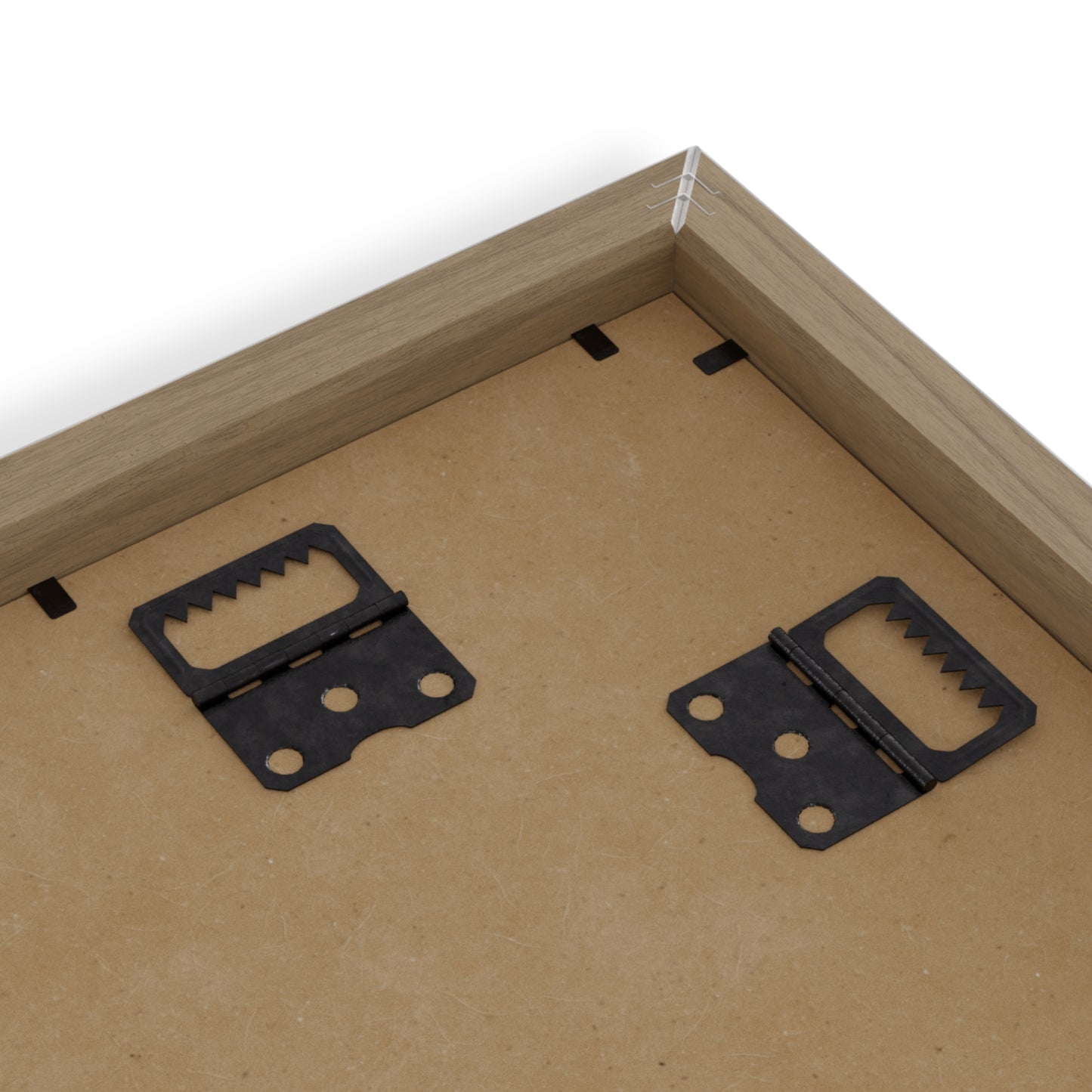Printify
Magnolia, The Umbrella Tree from 'The Natural History of Carolina, Florida, and the Bahama Islands' (1755) by Mark Catesby, from the Original, Framed Art Print
Magnolia, The Umbrella Tree from 'The Natural History of Carolina, Florida, and the Bahama Islands' (1755) by Mark Catesby, from the Original, Framed Art Print
受取状況を読み込めませんでした
Original public domain art from the Royal Library, digitally enhanced. Printed in London, 1755. Hand coloured etching.
First travelling to North America in 1712, the British naturalist Mark Catesby was driven, in his own words, by "a passionate desire of viewing as well the animal as vegetable productions in their native countries."
He remained in Virginia for seven years, viewing, collecting and painting the natural world, and sending seeds and saplings back to friends in Britain. Returning to London in 1719, Catesby soon became well known among British naturalists and patrons, including Sir Hans Sloane (1660-1753), William Sherard (1659-1728) and Peter Collinson (1694-1768).
In 1720, Sherard and the Royal Society, mooted an expedition to South Carolina to finish the work started by John Lawson’s New Voyage to Carolina (1709). The entomologist, Eleazar Albin (1690-1742), was offered the post but it appears that he refused it, the role being given instead to Catesby. However, the departure in early 1721 was delayed after he was approached by James Brydges, Duke of Chandos (1673-1744) who suggested he travel to Africa as a naturalist in the service of the Royal African Company. This idea had fallen through by December, and in early 1722, Catesby arrived at Charleston and began the work from which this drawing is taken.
Travelling from Charleston to the Appalachians, probably as far as Georgia, and later to the Bahamas, Catesby drew and collected specimens of the plants and animals he encountered. He regularly sent seeds and prepared specimens back to his sponsors in Britain and painted a series of watercolours for Sir Hans Sloane. Soon, the demand from sponsors proved so immense that Catesby requested more money to allow him to purchase an enslaved boy to assist him on an expedition along the Savannah River in March 1723. He also made use of Indigenous knowledge, hiring Native American guides and luggage bearers to assist him in tracking animals and to help him understand the varying medicinal and culinary properties of the native plant-life found in the region.
Returning to Britain in 1726, Catesby set about preparing his findings for publication. Inspired by Maria Sibylla Merian’s 'Metamorphosis Insectorum Surinamensium' (1705) he planned for prints of his drawings to be placed on pages facing their description and hoped that he could hire the finest Dutch, Flemish and French engravers for the project. However, due to a lack of financial support from his sponsors, Catesby had to abandon a proposed trip to Paris and Amsterdam and instead decided to learn to etch the plates himself.
On announcing his proposed work, 'The Natural History of Carolina, Florida and the Bahama Islands', in 1727, he planned for it to be published by subscription, issued in ten parts, published four months apart. The proposal soon gained 155 subscribers, requesting an estimated 200 copies.
Delays to the publication were caused by Catesby's determination to oversee all parts of the process. While the work appears to have initially been offered with both coloured and uncoloured plates, surviving copies indicate that the coloured sets were the ones that were wanted by subscribers. The coloured plates in each of the parts were personally inspected by Catesby who added the finishing touches. He also coloured several copies himself for presentation to significant patrons.
His efforts paid off handsomely. After looking at a copy of the finished works, the Finnish naturalist and pupil of Carl Linnaeus, Peter Kalm remarked that Catesby had "with unbelievably lifelike colouring, presented the rarest trees, plants, animals, birds, fishes, snakes, frogs, lizards and insects that occur in that place. It is difficult to believe that it is not the real thing that stands in its natural colour on the paper."
The Royal Library’s copy of 'The Natural History of Carolina,Florida, and the Bahama Islands' is unique. It was compiled in 1755, six years after Catesby’s death, probably through the influence of his friend and fellow naturalist George Edwards (1694-1773). The books contain Catesby’s original watercolours, inserted at the appropriate points in each of the three final volumes.
Place great art for your interior decor with this durable wood-framed poster. Frame comes in black or white and is available in seven versatile sizes.
.: Museum-quality custom frames
.: Matte premium paper
.: Plexiglass front
.: For indoor use
.: Multiple sizes









































折りたたみ可能なコンテンツ
品質の詳細についてはここをクリックしてください
スマート ホーム: 当社は、Wi-Fi、Z-Wave、Zigbee、Bluetooth Low Energy (BLE)、Thread などのホーム オートメーション テクノロジの最新の動作標準に取り組むことに専念しています。当社では、X10、Insteon、Universal Powerline Bus (UPB) などの古いホーム オートメーション標準またはプロトコルには対応していません。
ウォールアート: 個々の製品情報をご確認ください。当社のコレクションには、美術館品質の紙 170 gsm / 65 ポンドのマット (コーティングされていない) 紙を使用した高品質のサテン キャンバス プリントやフレーム入りポスターが含まれます。すべてに壁掛けキットが含まれており、縦向きまたは横向きに吊るすことができます。英国から印刷および発送されます。
衣類: 当社の T シャツはすべて、100% 高品質のコットンを使用して英国で製造されています。サイドに縫い目がないので、脇の下にかゆみを感じることがありません。ショルダーにはテープを施し耐久性を向上させています。
中程度の生地 (5.3 オンス/平方ヤードまたは 180 g/平方メートル)。剥がせるラベル付き。サイズ表については、個々の製品リストを確認してください。当社のすべてのサイズはヨーロッパおよび米国のサイズ基準に準拠しています。
クリックしてヒントを表示
アート作品を購入するときは、自分の好きなものを見つけてください。気に入ったものを買うだけなら、決断するのは難しくありません。
アート作品を家に飾っていて違和感がある場合は、移動させてください。さまざまな場所に置いてみて、壁にある他の作品と興味深い対話ができるかどうかを確認してください。小さなアート作品は、照明のスイッチの近くに置いたり、ベッドサイド テーブルなどの小さな家具の上に低く吊るしたりするのに適しています。
作業をグループ化すると非常に効果的です。フレームのグループを床またはテーブルの上に並べてテストします。プロの気分なら、マスキングテープを使って独自のぎっしりと詰まったグループをマークしましょう。
サイズが重要であることを理解してください。購入を追跡できます。 Vireous Shop と一緒に探索しましょう!
配送情報についてはここをクリックしてください
ウォールアートと T シャツは英国から 24 時間以内に発送されます。ファッションとアクセサリーは英国、米国、または中国から発送されるため、お届けまでにさらに時間がかかります。









































